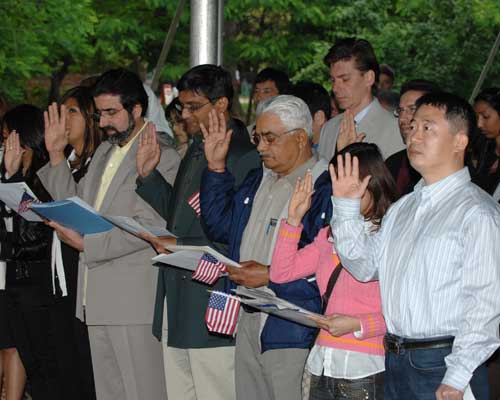SOLVE Act
|
U.S. Citizenship and Immigration Services |
Pro and Con
Supporters of SOLVE argued this comprehensive reform was needed. It would encourage a policy of family reunification, bringing together unauthorized immigrants in the U.S. and their immediate relatives. Millions of unauthorized immigrants make contributions to the U.S. economy, and the earned adjustment program would allow them to integrate better into U.S. society by learning English and civics. The bill’s solution would be efficient because it would also reduce the backlog of family-based visas (when a family member sponsors an immigrant to get a visa).
Opponents of the SOLVE Act argued that it was merely a disguise for an amnesty program for unauthorized immigrants. It would not reward only those who “play by the rules” and pay the fine, learn English, and work for five years. On the contrary, those unauthorized immigrants who do not qualify for the SOLVE Act’s earned adjustment program would still be given “transitional status” and would have a second chance to meet those requirements. In addition, it would increasingly burden the U.S. economy and population by allowing the newly authorized immigrants to bring their families into the country, too. The opponents’ perspective was that the SOLVE Act would create a new black market (illegal market) for the sale of fraudulent documents.
In May 2004, the Senate version of the bill was sent to the Committee on the Judiciary. In the next month, the House version of the bill was sent to the Subcommittee on Immigration, Border Security, and Claims. Neither version ever came to a vote in Congress.
For Discussion
-
What were the main provisions of the SOLVE Act?
-
Is it important to require immigrants to learn basic English? Why or why not?
-
Is comprehensive immigration reform necessary? Or can immigration laws address one issue at a time? Why or why not?
Links:
Senate version of the SOLVE bill
House version of the SOLVE bill



